On May 17, 1995, a distressing event unfolded in San Diego, California, involving Shawn Nelson, a troubled US Army veteran, and a stolen M60A3 Patton tank. This incident, driven by a culmination of personal tragedies and frustrations, led to a dramatic and destructive rampage through the city’s streets, culminating in Nelson’s death. To fully understand this event, we must examine the background of Shawn Nelson, the specifics of the tank theft, the rampage itself, and the aftermath.
Background of Shawn Nelson
Shawn Nelson, born in California in 1959, experienced a series of personal and professional setbacks leading up to the 1995 incident. A veteran of the United States Army, Nelson served from 1978 to 1980 but was discharged due to disciplinary issues. Following his military service, he embarked on a career in plumbing. However, his life took a downturn with the deaths of his parents, a divorce, financial troubles, and struggles with substance abuse and mental health issues.
In the early 1990s, Nelson’s life became increasingly troubled. He faced multiple lawsuits, including a malpractice suit against a hospital where he received treatment for injuries from a motorcycle accident. His business declined, and by 1995, he was unemployed, suffering from chronic pain due to his injuries, and facing the foreclosure of his home. These mounting pressures, along with the loss of his parents and his deteriorating mental health, culminated in a state of desperation
The Theft of the Tank
On the evening of May 17, 1995, Nelson entered the California National Guard Armory in San Diego. The facility’s security was lax, with an unlocked gate and a fence missing barbed wire in places. Nelson, familiar with military vehicles from his army service, managed to start an M60A3 Patton tank housed in the armory. The tank’s weapons were not loaded, which likely prevented further destruction during the subsequent events.
Once in control of the tank, Nelson embarked on a destructive path through the streets of San Diego. He crushed 40 parked vehicles, damaged infrastructure, and caused power outages affecting over 5,100 residents. His rampage lasted approximately 23 minutes, with police in pursuit. Nelson’s path of destruction led him onto Interstate 805 and then onto California State Route 163, where he attempted to knock down a pedestrian bridge and later got the tank stuck on a concrete barrier.
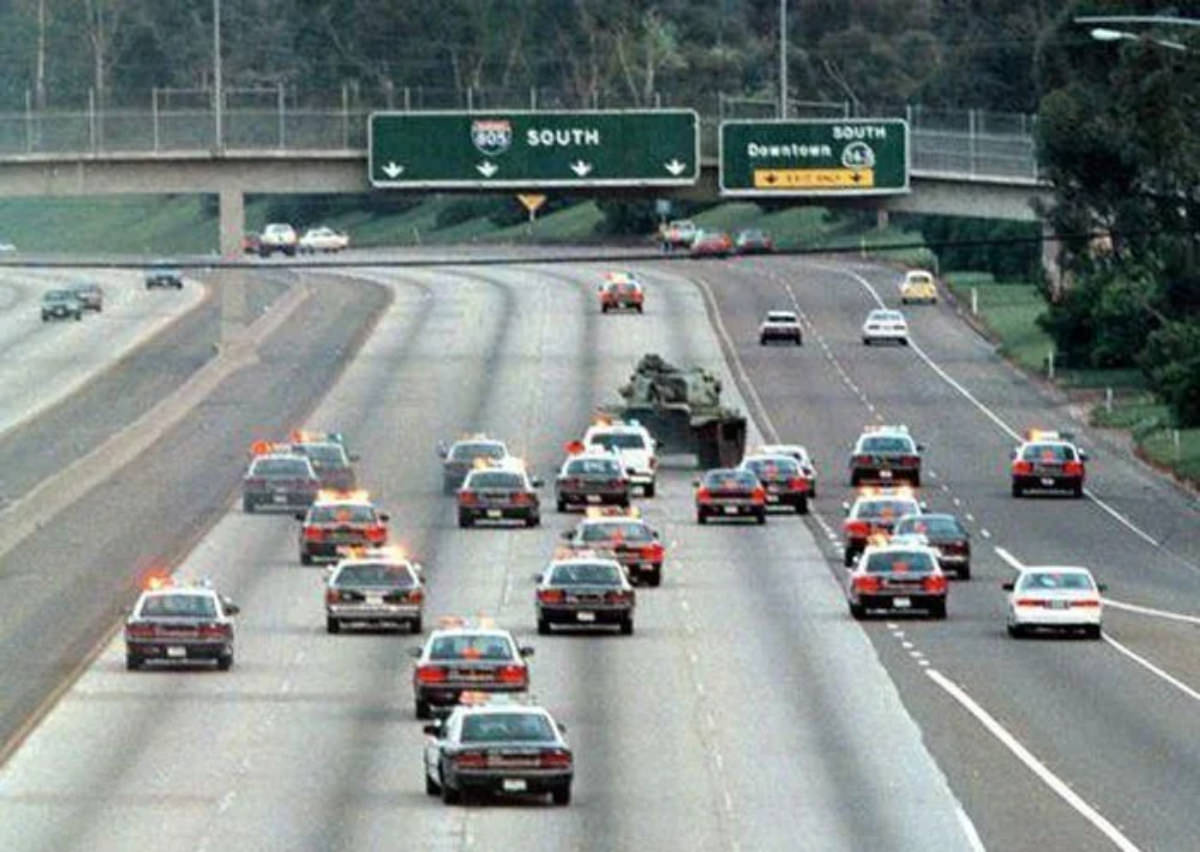
The climax of the 1995 San Diego tank rampage occurred when Shawn Nelson, having commandeered an M60A3 Patton tank, became immobilized on a concrete median on State Route 163. This event unfolded after a destructive spree through the city, where Nelson used the tank to crush vehicles and infrastructure, causing extensive damage but no physical injuries to others.
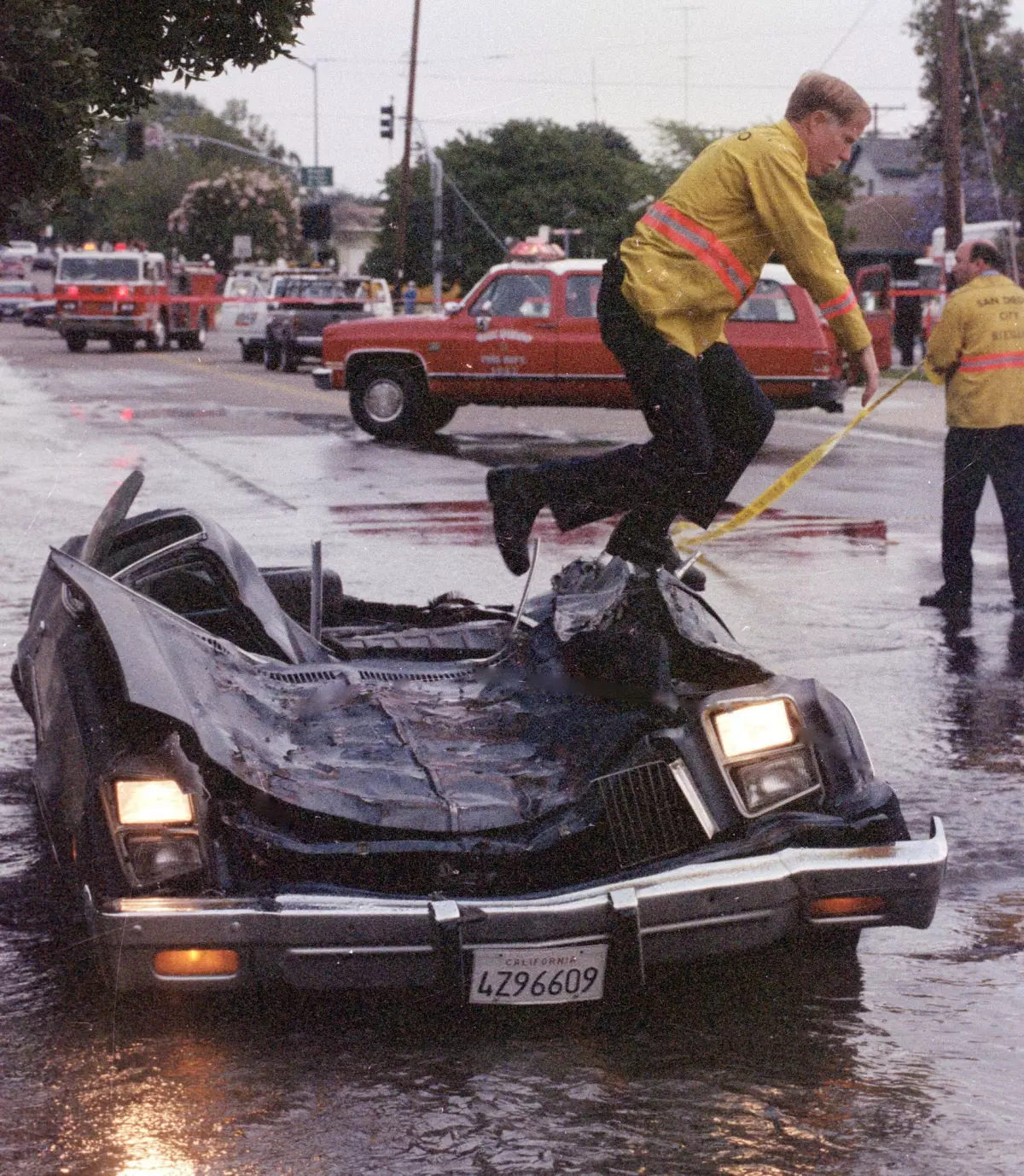
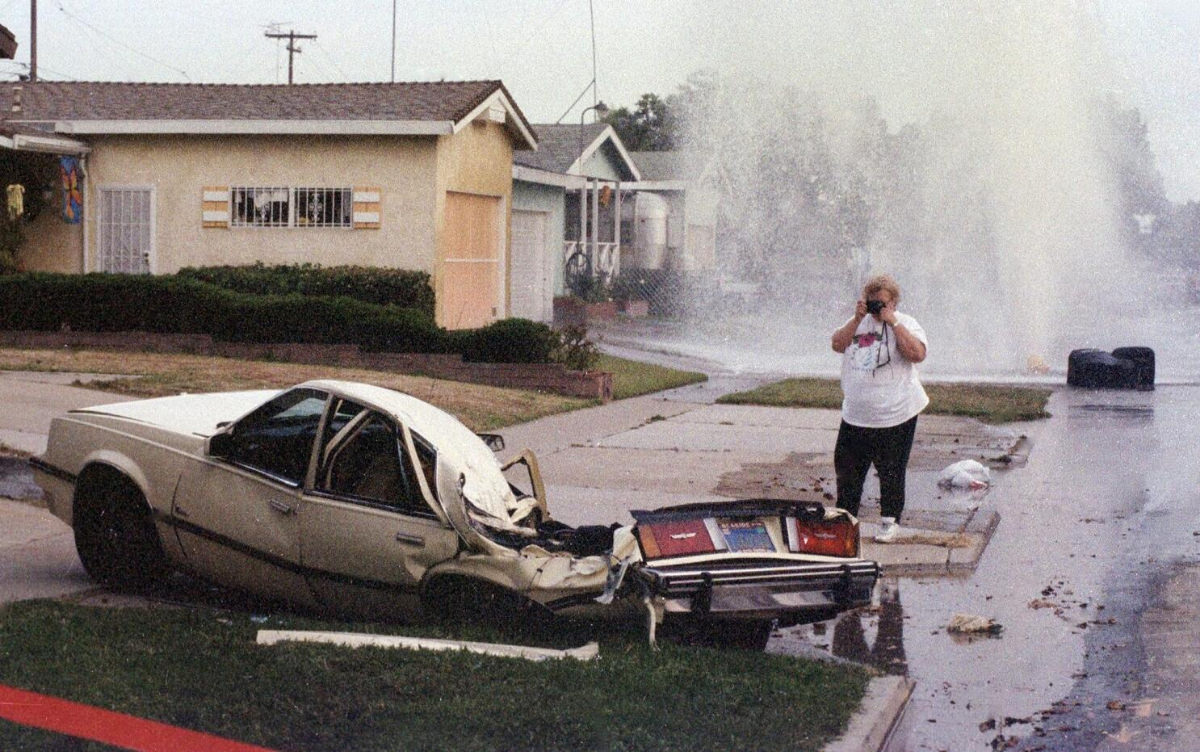
As the tank became stuck, police officers faced the critical task of apprehending Nelson. They were unable to utilize less lethal methods due to the unique and dangerous nature of the situation. The tank’s armament, including a 105-millimeter cannon, a 12.7-millimeter antiaircraft gun, and a 7.62-millimeter machine gun, were not loaded, reducing the potential for further destruction. However, the officers were uncertain whether Nelson was armed inside the tank, adding to the risk and complexity of the situation.
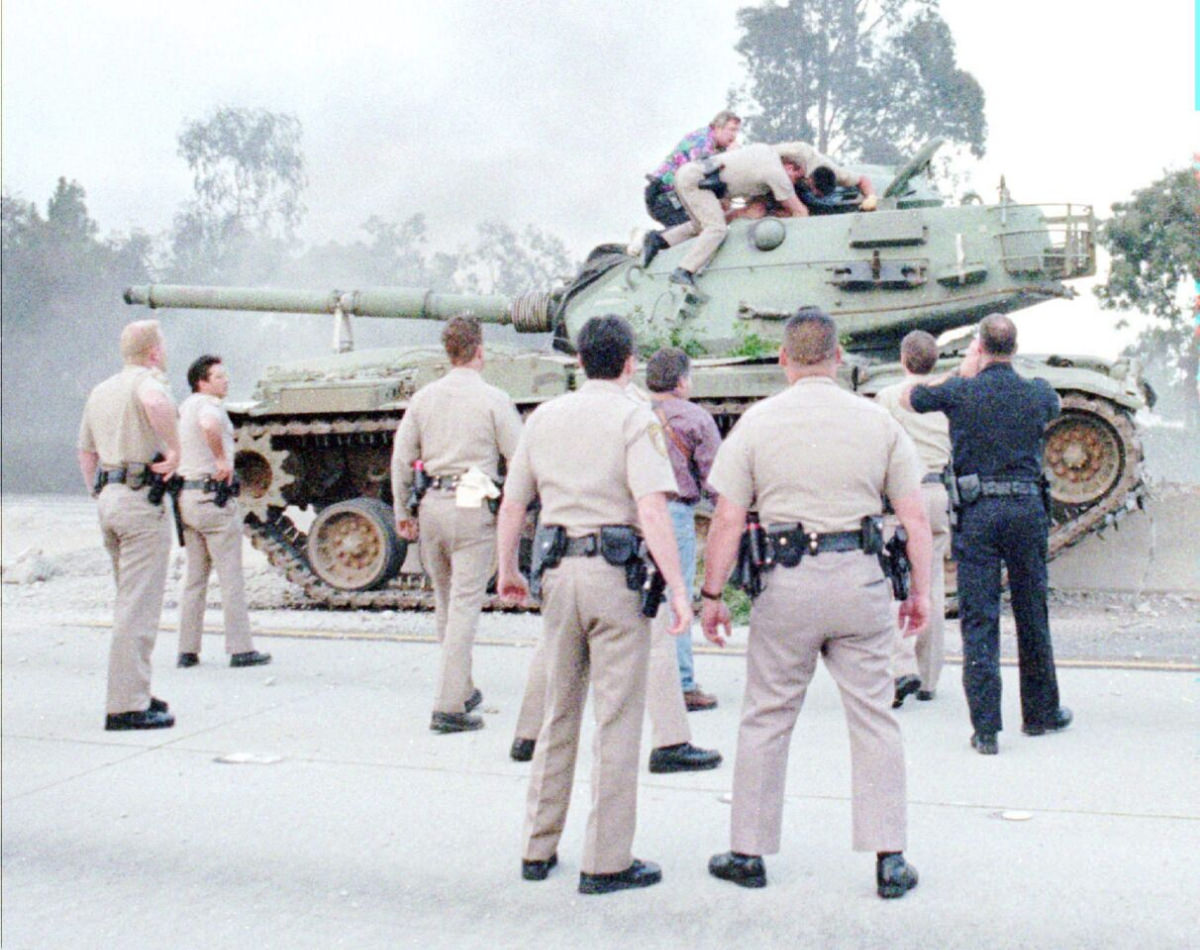
The police response involved officers climbing onto the tank and forcibly opening the hatch, which was in “combat lockdown,” using bolt cutters. Once they gained access, they commanded Nelson to surrender. Nelson, however, refused to comply and instead attempted to dislodge the tank, rocking it back and forth. Given the circumstances, including the inability to use tear gas without compromising their ability to enter the tank if it remained mobile, the police were left with few options.
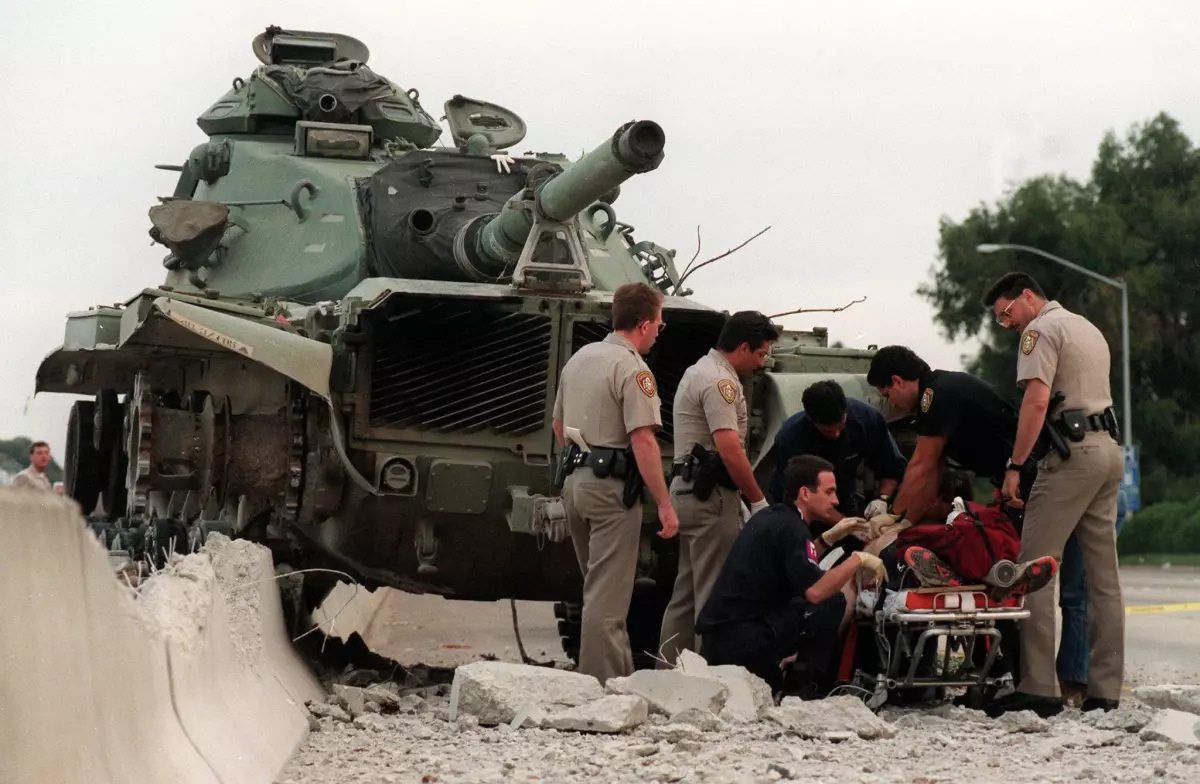
In the end, the officers were forced to make a split-second decision to use lethal force. Nelson was shot in the neck by one of the officers, leading to his death. The incident concluded without any other physical injuries, but the use of lethal force in this situation was later scrutinized. Nelson’s friends and some members of the public questioned whether alternatives, such as tear gas or crisis negotiation, could have been employed. However, the police defended their actions, emphasizing the necessity to stop Nelson due to the potential risk of further destruction and harm if he had managed to free the tank.
Aftermath and Legal Ramifications
Following the incident, there was public scrutiny over the security of the armory and the police’s use of lethal force. The California National Guard faced criticism for its lax security, especially in light of the recent Oklahoma City bombing. In response to the incident, the National Guard improved security at its armories and relocated its tanks to more secure facilities. Legally, the California Guard was found negligent for the security breach, and the state compensated various parties for the damages incurred during the rampage.



I remember watching this on TV — hoping it would drive past my home.
I was not a bright child.
I remember this too. I worked at Pacific Honda at the time. I was home by the time he went through the area. Glad I was, that was too crazy.
Damn, never knew about this. I moved to SD in 1998. Video brought back memories of that Robertos taco shop on Convoy.
I was at the LV rec after the chase ended on tv went to play soccer. That Mary birch sharp cam from Fox 5. Is pointing in the area where the above tank picture was taken. Also I think that tank is at the national guard on display in front of the building behind Kearny high school. Crazy, the place where the tank was taken from.
This was the day I moved to San Diego. What a country!!